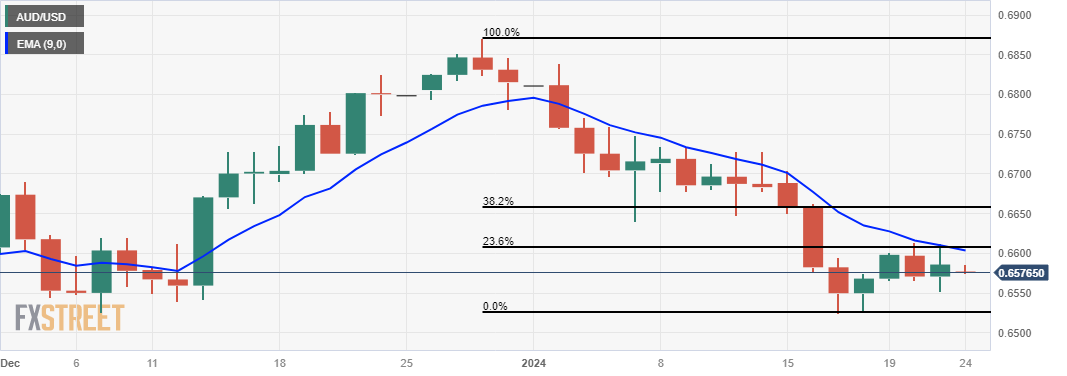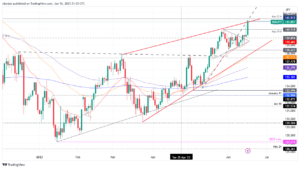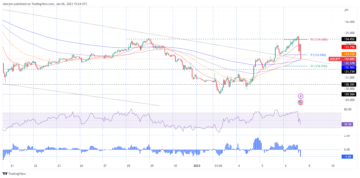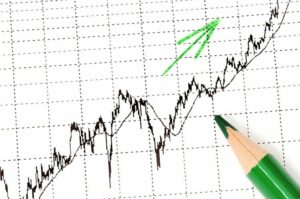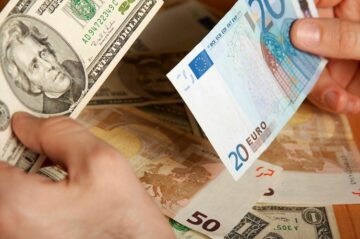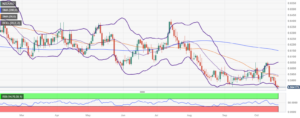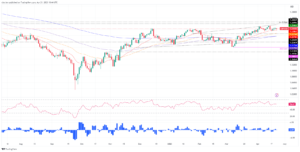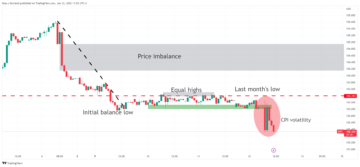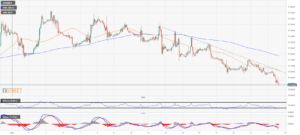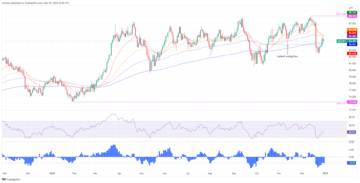- Australian Dollar consolidates after the release of improved PMI figures.
- Australian Manufacturing and Services PMI increased to 50.3 and 47.9, respectively.
- The upbeat Australian share market provides support for the AUD.
- US Dollar demand persists on risk aversion sentiment as escalated geopolitical tension.
- US forces carried out strikes on Iran-backed Kataib Hezbollah militia group in Iraq.
The Australian Dollar (AUD) attempts to move on an upward trajectory on Wednesday on the back of the improved preliminary Purchasing Managers Index (PMI) from Australia, released on a monthly basis by Judo Bank and S&P Global on Wednesday. However, the US Dollar (USD) maintains stability, holding its positive position from the previous session, despite a decrease in the 2-year United States (US) bond yield.
Australia's PMI data revealed a positive shift in business activity in January across all sectors. The Manufacturing PMI increased from 47.6 to 50.3, showcasing improvement. Services PMI also saw an uptick, rising from 47.1 to 47.9. The Composite PMI registered an increase, reaching 48.1 compared to December's 46.9. Furthermore, Australian shares continued their upward trajectory, setting a third consecutive record high. The surge was attributed to increased performance in Miners and energy stocks, serving as a favorable factor for the AUD/USD pair.
The US Dollar Index (DXY) remains stable after its recent upswing, as buying interest in the US Dollar persists due to risk aversion sentiment. This trend is likely associated with the escalated geopolitical tensions in the Middle East. The US Secretary of Defense issued a statement confirming that "US military forces carried out essential and proportional strikes on three facilities utilized by the Iranian-backed Kataib Hezbollah militia group and other Iran-affiliated groups in Iraq." These actions were a direct response to a sequence of escalating attacks.
Traders are likely anticipating the release of the S&P Global Purchasing Managers Index data from the United States on Wednesday. This data is expected to provide crucial insights into business activities within the nation, influencing market sentiments about the Federal Reserve’s (Fed) interest rate trajectory.
Money market futures have reduced the likelihood of a rate cut by the Fed in March. However, by May, there is full pricing in of a 25 basis point (bps) cut, and the probability of a more substantial 50 bps cut stands at 50%.
Daily Digest Market Movers: Australian Dollar improves on positive PMI data
- Australia’s Westpac Leading Index (MoM) declined by 0.03% in December against November’s growth of 0.07%.
- National Australia Bank's Business Conditions inched down to the reading of 7 in December from 9 prior.
- National Australia Bank's Business Confidence improves to -1 from the previous figure of -9.
- Australia’s Consumer Inflation Expectations remained steady at 4.5% in January.
- The Chair of Australia's sovereign wealth fund Peter Costello commented that inflation in Australia is showing early signs of moderation. However, Costello emphasizes that there is still a considerable distance to cover to bring prices back within the RBA's target band.
- The People's Bank of China keeps its Loan Prime Rate (LPR) steady for both the one-year and five-year terms. The rate remains at 3.45% for the one year and 4.20% for the five years.
- US Conference Board has reported a slight improvement in the Leading Economic Index for December, moving from -0.5% in November to -0.1% in December. This surpassed expectations for an improvement to -0.3%.
- The preliminary US Michigan Consumer Sentiment Index rose to 78.8 in January from 69.7 prior, exceeding the expected figure of 70.
Technical Analysis: Australian Dollar hovers below the psychological level at 0.6600
The Australian Dollar trades around 0.6580 on Wednesday, with immediate resistance noted at the psychological level of 0.6600 aligned with the nine-day Exponential Moving Average (EMA) at 0.6603 before the 23.6% Fibonacci retracement level at 0.6606. A firm breakthrough above the resistance zone could help the pair approach the major barrier at 0.6650 followed by the 38.2% Fibonacci retracement at 0.6657. On the downside, the AUD/USD pair could revisit the weekly low at 0.6551 aligned with the major level at 0.6550. A break below the latter could push the pair to retest the monthly low at 0.6524.
AUD/USD: Daily Chart
Australian Dollar price today
The table below shows the percentage change of Australian Dollar (AUD) against listed major currencies today. Australian Dollar was the strongest against the Canadian Dollar.
| USD | EUR | GBP | CAD | AUD | JPY | NZD | CHF | |
| USD | -0.02% | -0.04% | 0.02% | 0.07% | -0.10% | -0.02% | -0.03% | |
| EUR | 0.01% | -0.03% | 0.03% | 0.04% | -0.08% | -0.03% | -0.01% | |
| GBP | 0.05% | 0.03% | 0.05% | 0.08% | -0.06% | -0.05% | 0.01% | |
| CAD | -0.02% | 0.00% | -0.05% | 0.03% | -0.11% | -0.09% | -0.04% | |
| AUD | -0.04% | -0.04% | -0.08% | -0.03% | -0.12% | -0.12% | -0.07% | |
| JPY | 0.08% | 0.07% | 0.06% | 0.09% | 0.17% | 0.01% | 0.07% | |
| NZD | 0.10% | 0.06% | 0.03% | 0.09% | 0.14% | 0.01% | 0.05% | |
| CHF | 0.03% | 0.01% | -0.02% | 0.04% | 0.09% | -0.07% | -0.05% |
The heat map shows percentage changes of major currencies against each other. The base currency is picked from the left column, while the quote currency is picked from the top row. For example, if you pick the Euro from the left column and move along the horizontal line to the Japanese Yen, the percentage change displayed in the box will represent EUR (base)/JPY (quote).
Australian Dollar FAQs
One of the most significant factors for the Australian Dollar (AUD) is the level of interest rates set by the Reserve Bank of Australia (RBA). Because Australia is a resource-rich country another key driver is the price of its biggest export, Iron Ore. The health of the Chinese economy, its largest trading partner, is a factor, as well as inflation in Australia, its growth rate and Trade Balance. Market sentiment – whether investors are taking on more risky assets (risk-on) or seeking safe-havens (risk-off) – is also a factor, with risk-on positive for AUD.
The Reserve Bank of Australia (RBA) influences the Australian Dollar (AUD) by setting the level of interest rates that Australian banks can lend to each other. This influences the level of interest rates in the economy as a whole. The main goal of the RBA is to maintain a stable inflation rate of 2-3% by adjusting interest rates up or down. Relatively high interest rates compared to other major central banks support the AUD, and the opposite for relatively low. The RBA can also use quantitative easing and tightening to influence credit conditions, with the former AUD-negative and the latter AUD-positive.
China is Australia’s largest trading partner so the health of the Chinese economy is a major influence on the value of the Australian Dollar (AUD). When the Chinese economy is doing well it purchases more raw materials, goods and services from Australia, lifting demand for the AUD, and pushing up its value. The opposite is the case when the Chinese economy is not growing as fast as expected. Positive or negative surprises in Chinese growth data, therefore, often have a direct impact on the Australian Dollar and its pairs.
Iron Ore is Australia’s largest export, accounting for $118 billion a year according to data from 2021, with China as its primary destination. The price of Iron Ore, therefore, can be a driver of the Australian Dollar. Generally, if the price of Iron Ore rises, AUD also goes up, as aggregate demand for the currency increases. The opposite is the case if the price of Iron Ore falls. Higher Iron Ore prices also tend to result in a greater likelihood of a positive Trade Balance for Australia, which is also positive of the AUD.
The Trade Balance, which is the difference between what a country earns from its exports versus what it pays for its imports, is another factor that can influence the value of the Australian Dollar. If Australia produces highly sought after exports, then its currency will gain in value purely from the surplus demand created from foreign buyers seeking to purchase its exports versus what it spends to purchase imports. Therefore, a positive net Trade Balance strengthens the AUD, with the opposite effect if the Trade Balance is negative.
- SEO Powered Content & PR Distribution. Get Amplified Today.
- PlatoData.Network Vertical Generative Ai. Empower Yourself. Access Here.
- PlatoAiStream. Web3 Intelligence. Knowledge Amplified. Access Here.
- PlatoESG. Carbon, CleanTech, Energy, Environment, Solar, Waste Management. Access Here.
- PlatoHealth. Biotech and Clinical Trials Intelligence. Access Here.
- Source: https://www.fxstreet.com/news/australian-dollar-strives-to-extend-its-gains-after-improved-aussie-pmi-data-202401240132
- :has
- :is
- :not
- ][p
- $UP
- 1
- 12
- 2%
- 2021
- 23
- 25
- 32
- 35%
- 36
- 41
- 46
- 50
- 7
- 70
- 8
- 9
- a
- About
- above
- According
- Accounting
- across
- actions
- activities
- activity
- adjusting
- After
- against
- aggregate
- aligned
- All
- along
- also
- an
- analysis
- and
- Animate
- Another
- anticipating
- approach
- ARE
- around
- AS
- Assets
- associated
- At
- Attacks
- Attempts
- AUD
- AUD/USD
- aussie
- Australia
- Australian
- Australian dollar
- average
- aversion
- back
- Balance
- BAND
- Bank
- Bank of China
- Banks
- barrier
- base
- basis
- basis point
- BE
- because
- before
- below
- between
- Biggest
- Billion
- board
- bond
- both
- Box
- Break
- breakthrough
- bring
- business
- buyers
- Buying
- by
- CAN
- Canadian
- Canadian Dollar
- carried
- case
- central
- Central Banks
- Chair
- change
- Changes
- China
- chinese
- Column
- commented
- compared
- conditions
- Conference
- conference board
- confidence
- consecutive
- considerable
- Consolidates
- consumer
- consumer sentiment
- content
- continued
- could
- country
- cover
- created
- credit
- crucial
- currencies
- Currency
- Cut
- daily
- data
- December
- decrease
- Defense
- Demand
- Despite
- destination
- difference
- Digest
- direct
- displayed
- distance
- doing
- Dollar
- dollar index
- down
- downside
- driver
- due
- Dxy
- each
- Early
- easing
- East
- Economic
- economy
- effect
- EMA
- emphasizes
- ends
- energy
- essential
- Ether (ETH)
- EUR
- Euro
- example
- expanded
- expectations
- expected
- exponential
- exponential moving average
- export
- exports
- extend
- facilities
- factor
- factors
- Falls
- FAQ
- FAST
- favorable
- Fed
- Federal
- Federal Reserve’s
- Fibonacci
- Figure
- Figures
- Firm
- five
- followed
- For
- Forces
- foreign
- Former
- from
- from 2021
- full
- fund
- Furthermore
- Futures
- Gain
- Gains
- generally
- geopolitical
- Global
- goal
- Goes
- goods
- greater
- Group
- Group’s
- Growing
- Growth
- Have
- Health
- help
- High
- higher
- highly
- holding
- Horizontal
- However
- HTTPS
- if
- immediate
- Impact
- imports
- improved
- improvement
- improves
- in
- Increase
- increased
- Increases
- index
- inflation
- Inflation expectations
- inflation rate
- influence
- influencing
- insights
- interest
- INTEREST RATE
- Interest Rates
- into
- Investors
- iraq
- Issued
- IT
- ITS
- January
- Japanese
- Japanese Yen
- Key
- largest
- leading
- left
- LEND
- Level
- lifting
- likelihood
- likely
- Line
- Listed
- loan
- Low
- LPR
- Main
- maintain
- maintains
- major
- Managers
- manufacturing
- map
- March
- Market
- market sentiment
- materials
- May..
- Michigan
- Middle
- Middle East
- Military
- Miners
- moderation
- module
- mom
- monthly
- more
- most
- move
- Movers
- moving
- moving average
- nation
- negative
- net
- noted
- November
- of
- often
- on
- ONE
- opposite
- or
- Other
- out
- pair
- pairs
- partner
- pays
- People
- percentage
- performance
- persists
- Peter
- pick
- picked
- plato
- Plato Data Intelligence
- PlatoData
- pmi
- Point
- position
- positive
- preliminary
- previous
- price
- Prices
- pricing
- primary
- Prime
- Prior
- probability
- produces
- provide
- provides
- psychological
- purchase
- purchases
- purchasing
- purely
- Push
- Pushing
- quantitative
- Quantitative Easing
- quote
- Rate
- Rates
- Raw
- RBA
- reaching
- Reading
- recent
- record
- Reduced
- registered
- relatively
- release
- released
- remained
- remains
- Reported
- represent
- Reserve
- reserve bank
- reserve bank of australia
- Reserve Bank of Australia (RBA)
- reserves
- Resistance
- respectively
- response
- result
- retracement
- Revealed
- Rises
- rising
- Risk
- Risky
- ROSE
- ROW
- s
- S&P
- S&P Global
- saw
- secretary
- Sectors
- seeking
- sentiment
- sentiments
- Sequence
- Services
- serving
- session
- set
- setting
- Share
- Shares
- shift
- showcasing
- showing
- Shows
- significant
- Signs
- So
- sought
- sovereign
- sovereign wealth fund
- Stability
- stable
- stands
- starts
- Statement
- States
- steady
- Still
- Strengthens
- Strikes
- strives
- strongest
- substantial
- support
- surge
- surpassed
- surplus
- surprises
- table
- taking
- Target
- tend
- tensions
- terms
- that
- The
- the Fed
- The Weekly
- their
- then
- There.
- therefore
- These
- Third
- this
- three
- tightening
- to
- today
- top
- trade
- trades
- Trading
- trajectory
- Trend
- United
- United States
- upbeat
- upward
- us
- US Dollar
- US Dollar Index
- US military
- USD
- use
- utilized
- value
- Versus
- was
- Wealth
- Wednesday
- weekly
- WELL
- were
- Westpac
- What
- when
- whether
- which
- while
- whole
- will
- with
- within
- year
- years
- Yen
- Yield
- you
- zephyrnet

